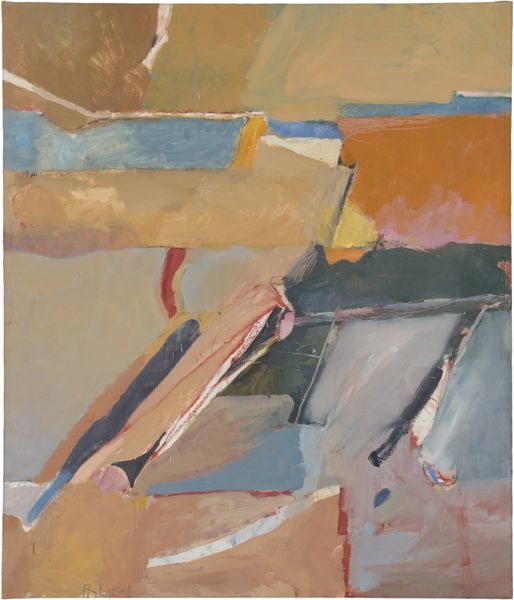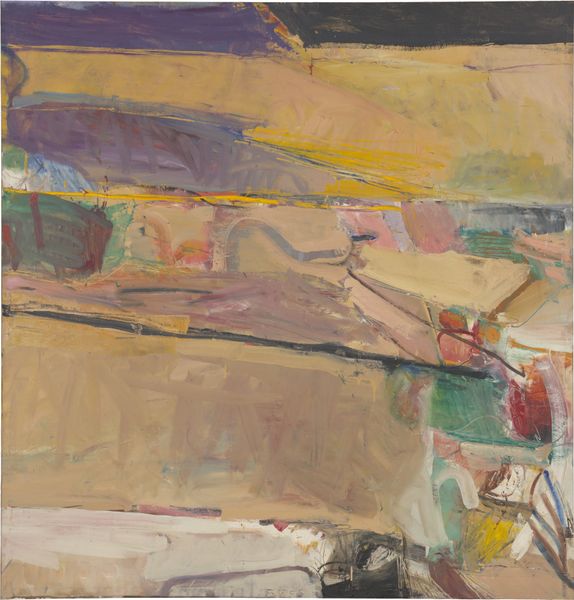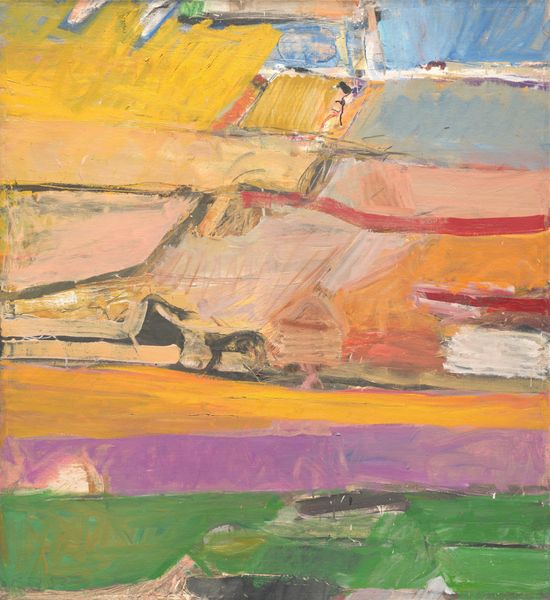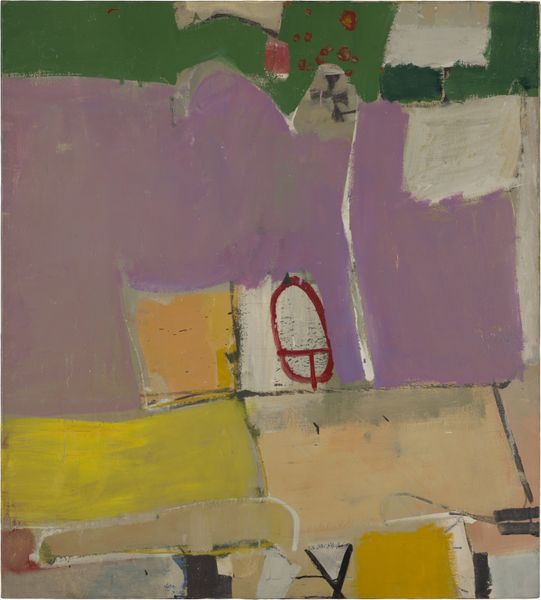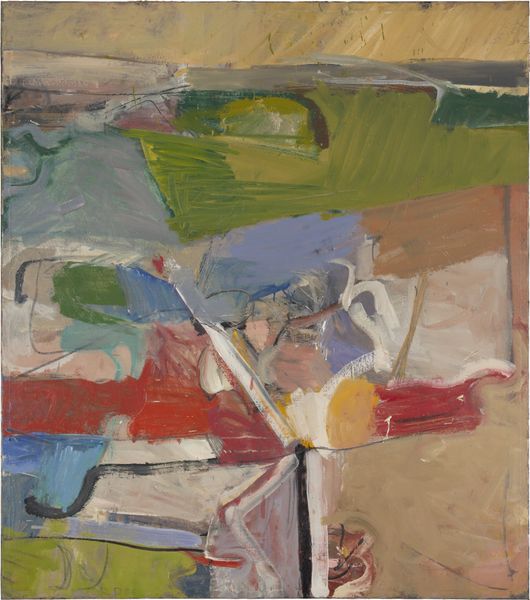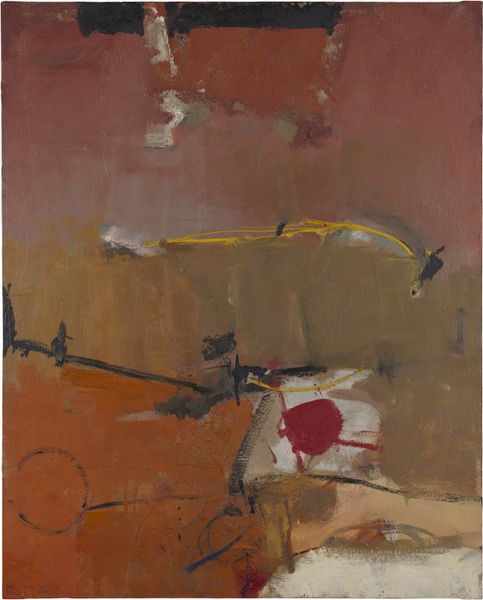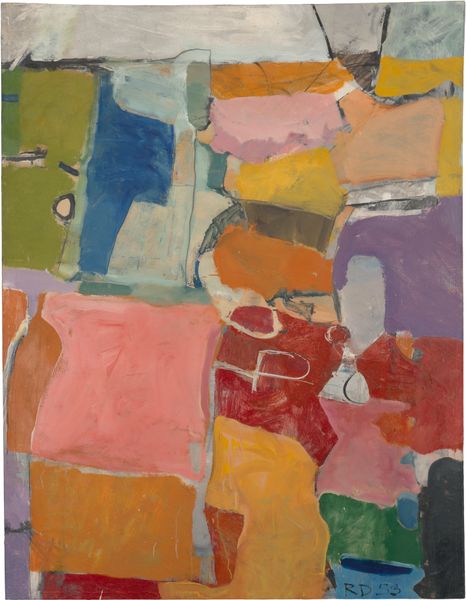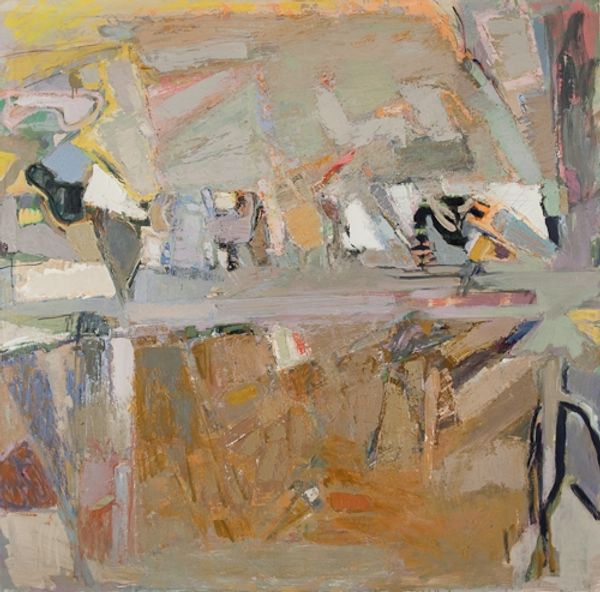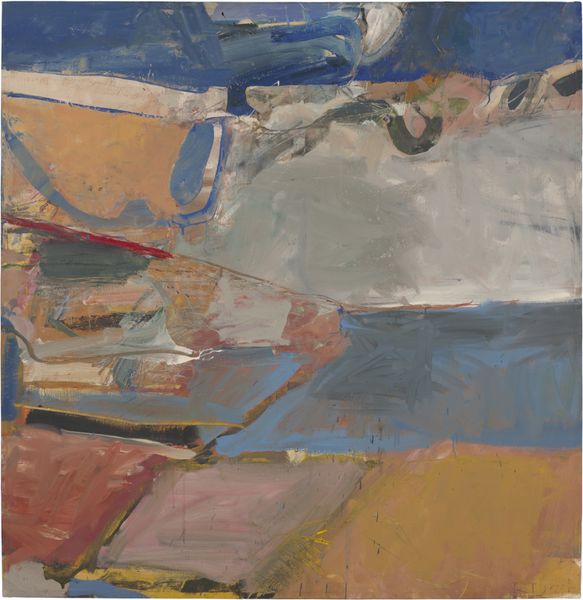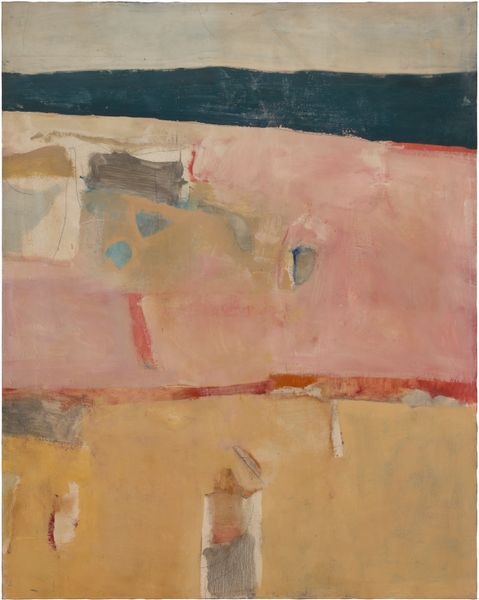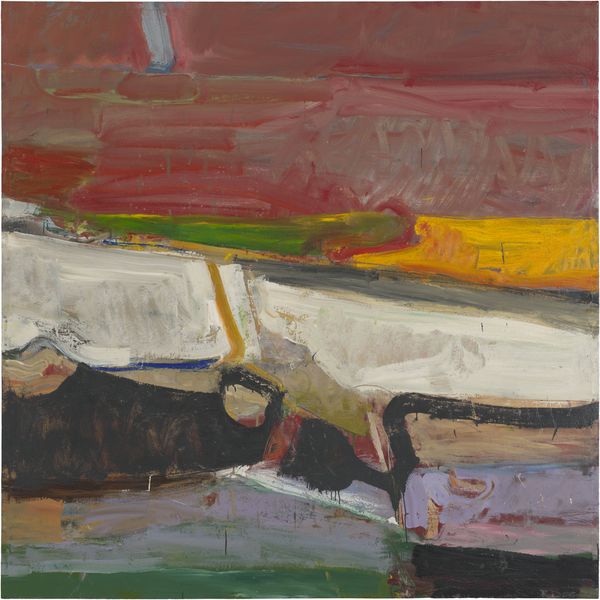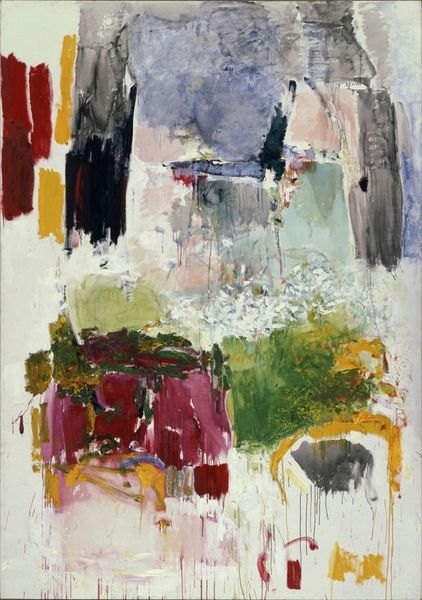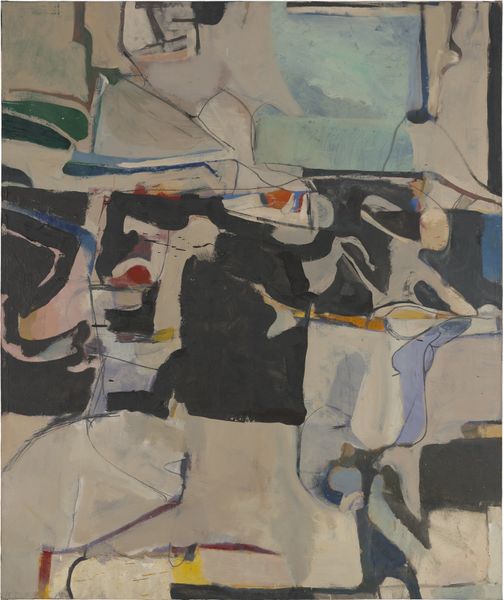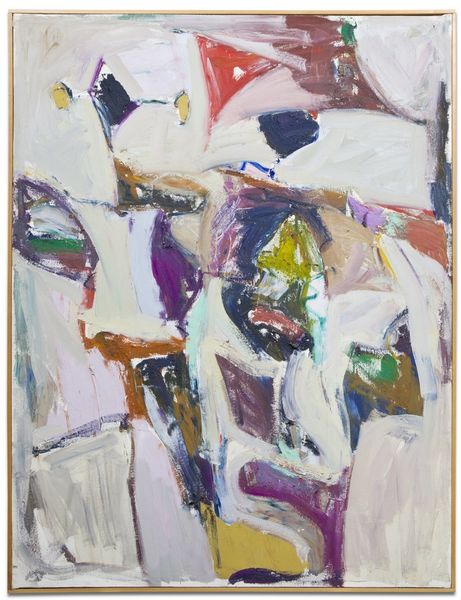
#
abstract expressionism
#
abstract painting
#
possibly oil pastel
#
oil painting
#
bay-area-figurative-movement
#
fluid art
#
neo expressionist
#
acrylic on canvas
#
paint stroke
#
impressionist inspired
#
expressionist
#
orange
Dimensions: 142.2 x 134 cm
Copyright: Richard Diebenkorn Foundation
Editor: So, this is Richard Diebenkorn's "A Day at the Races" from 1953, looks like oil on canvas. The muted palette and blocky composition make me think of landscapes viewed through a hazy lens. What’s your take on it? Curator: Well, the canvas itself is crucial. Look at the visible texture, how Diebenkorn lets the materiality speak. This isn't just representation; it's about the paint as a substance, its application, and its physical presence. It rejects traditional distinctions, doesn’t it? Editor: It does! It’s not quite photorealism... Do you mean that the process is part of the statement, even more so than the image it evokes? Curator: Exactly! Consider the post-war context. Mass production was booming, but artists like Diebenkorn were drawn to the handmade, the unique mark. How does this painting engage with ideas of labor and value in that era? Editor: So, the conscious visibility of the brushstrokes becomes a statement of the artist’s labor and a rejection of perfect industrial finishes. Curator: Precisely. And think about the title, "A Day at the Races." It hints at a leisure activity, a form of consumption, yet the abstraction disrupts that direct association. Editor: So, the title offers a social context but also invites us to consider the contrast between the subject matter and the artist's chosen style. Is Diebenkorn commenting on the commodification of leisure? Curator: Perhaps. It’s an exploration of visual language intertwined with the social and economic realities of its time. By highlighting process, he challenges our understanding of what art *is*. Editor: That’s so insightful. It reframes the work as more than just a painting; it’s a commentary on art-making itself! Curator: It becomes a document of its own making. Something to remember the next time we look at a piece like this.
Comments
No comments
Be the first to comment and join the conversation on the ultimate creative platform.
